5th Floor, West Tower, World Financial Centre
1 Dong San Huan Middle Road
Chaoyang District, Beijing 100020, China
Tel: +86 10 5081 5880

June 07, 2019
SAIF 10th Anniversary and Beijing Forum 2019
On June 15th, Shanghai Advanced Institute of Finance (SAIF) celebrated its 10th anniversary and held SAIF (Beijing) Forum 2019, which gathered leading economists and industry leaders from home and abroad. Paul M. Romer, 2018 Nobel Laureate in Economics and Professor of Economics at New York University; Guiping Liu, President of China Construction Bank; Jiang Wang, Chair of the Faculty Council of SAIF; Guoqiang Long, Deputy Director of the Development Research Center of the State Council; and Fang Cai, Vice President and Member of the Chinese Academy of Social Sciences, delivered keynote speeches. Chun Chang, Professor of Finance and Executive Dean of SAIF, addressed the gathering on behalf of the organizer. Ning Tang, Founder and CEO of CreditEase; Yonghua Lin, President of IBM China Research Institute; Jie Yang, General Manager of Pre-sales System Engineering Dept. of Dell Technology Group Greater China; Jianguang Shen, Vice President and Chief Economist of JD Digits; and Feng Li, then Professor of Accounting at SAIF, engaged in a panel discussion: “Technology and Innovation Drives Financial Development”. The panel discussion was presided over by Hong Yan, then Professor of Finance and DeputyDean of SAIF and Vice President of the China Academy of Financial Research at Shanghai Jiao Tong University. Jiange Li, Chairman of Sun Yefang Economic Science Foundation, concluded the event with his remarks. Jie Pan, Associate Dean of SAIF; and Ning Zhu, then Professor of Finance at SAIF, delivered speeches at the opening and keynote sessions, respectively. The 10th Anniversary Celebration Luncheon was held on the same day, attended by more than 100 guests, including: SAIF alumni, media, partners, and other stakeholders. Paul M. Romer and Yongding Yu made keynote speeches at the Luncheon and communicated with guests.
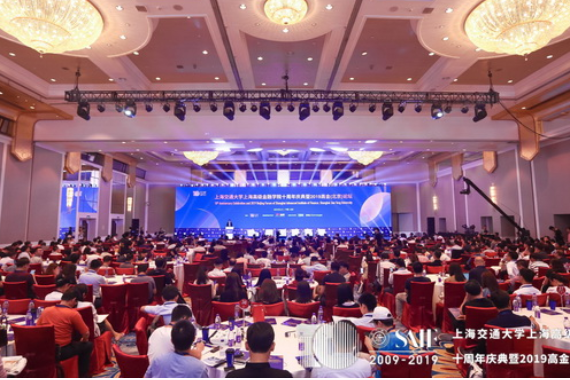
April 22, 2019
“New Era, New Finance” SAIF Celebrated Its 10th Anniversary
On April 20th, 2019, Shanghai Advanced Institute of Finance (SAIF), Shanghai Jiao Tong University (SJTU) celebrated its 10th anniversary at Wenzhitang Auditorium on SJTU Xuhui Campus, under the theme of “New Era, New Finance”. Qing Wu, Deputy Mayor of Shanghai and Chairman of the SAIF Board; and Zhongqin Lin, President and Deputy Secretary of the CPC Committee of SJTU and Fellow of the Chinese Academy of Engineering, addressed the ceremony. Prof. Jiang Wang, Chairman of SAIF Faculty Council, presented a report for the celebration. Guangshao Tu, Adjunct Professor at SJTU and former Vice Chairman and General Manager of China Investment Corporation; Xinghai Fang, Vice Chairman of China Securities Regulatory Commission; and Franklin Allen, professor of Finance and Economics at Imperial College London and former President of the American Academy of Financial Management, delivered keynote speeches. Nearly 1,000 participants witnessed the celebration, including: Yang Zheng, Director of Shanghai Municipal Financial Regulatory Bureau; Jing Lu, Director of Shanghai Municipal Education Commission; Dexiu Ma, former Secretary of the CPC Committee of SJTU; Jie Zhang, former President of SJTU and Fellow of the Chinese Academy of Sciences; Zhen Huang, Vice President of SJTU and Vice Chairman of Shanghai CPPCC; Xuemin Xu, Member of the Standing Committee of the CPC Committee and Vice President of SJTU; Prof. Ming Su, former Deputy Secretary of the Standing Committee of the CPC Committee of SJTU and Director of the Education, Science, Culture and Health Committee of Shanghai Municipal People's Congress; Quyuan Ye, former Executive Vice President of SJTU; Chun Chang, Executive Dean and Professor of Finance at SAIF; Qigui Zhu, Secretary of the CPC Committee at SAIF; representatives of Chinese and international universities and colleges; representatives of SJTU affiliates; representatives of alumni at home and abroad; and current students and faculty. All gathered together to review the journey over the past decade and look forward to the future. The celebration was presided over by Qigui Zhu, Secretary of the CPC Committee of SAIF. The keynote speeches were mediated by Chun Chang, Executive Dean at SAIF. Back on April 19, 2009, SAIF was formally unveiled, aiming to become a world class institution of research and advanced learning in finance and management. It is based on an international first-class business school model, in compliance with the national strategy of Shanghai Municipal People’s Government to build Shanghai into an international financial center.
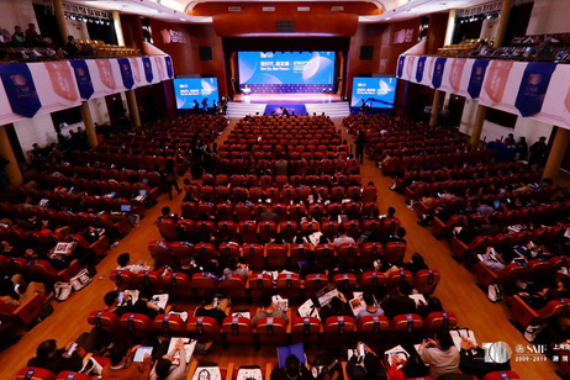
December 19, 2018
Launching Ceremony of Shanghai Finance Forum 2018 and Global Financial Leaders F ...
On December 15, 2018, Shanghai Finance Forum 2018 officially kicked off. It was hosted by Shanghai Advanced Institute of Finance (SAIF), Shanghai Jiao Tong University (SJTU); China Academy of Financial Research (CAFR); and International Financer Forum. Guangshao Tu, Vice Chairman and President of China Investment Corporation; Stanley Fischer, former Vice Chairman of Federal Reserve and former Governor of the Bank of Israel; Howard Davies, Chairman of the Royal Bank of Scotland; and many other international financial experts attended the event and discussed the role of financial leaders in the new era. Given the uncertainties in the international economy and the coexistence of economic opportunities and challenges in China, Shanghai Finance Forum 2018 focused on the theme of “Openness and Integration: Connecting China’s Financial Industry to the World”. This brought together the world's top scholars, politicians and industry leaders to brainstorm and explore the new roadmap for key issues in finance and global economic growth. At the beginning of the event, Qing Wu, Deputy Mayor of Shanghai; Sixian Jiang, Secretary of the CPC Committee of SJTU; and Prof. Jiang Wang, Chair of SAIF Faculty Council and Mizuho Financial Group Professor at the MIT Sloan School of Management, delivered speeches. On the same day, the Global Financial Leaders Forum, jointly sponsored by SAIF and CAFR (along with a global community of institutions and professionals interested in China's financial development), was also launched at the event. The Forum will strive to create an open, professional and pragmatic platform of communication and research. It will be a think tank and cooperation ecosystem, plan for China's financial modernization and internationalization, and contribute to the deep integration of the world economy.
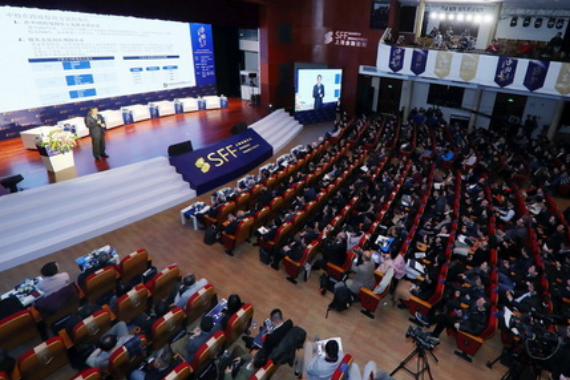
November 21, 2018
SAIF MF Employment Report 2018 Released
Shanghai Advanced Institute of Finance (SAIF) at Shanghai Jiao Tong University (SJTU) recently released the employment report for SAIF Master of Finance (MF) graduates in 2018. The data shows that SAIF MF graduates are consistently favored by the market and are fully employed even before graduation (boasting the highest salary at over RMB 1,000,000). The SAIF MF Program has been the flagship program at SAIF since its inception in 2009. It has achieved ongoing and rapid growth, and it has won an outstanding reputation in the market. This year greeted 47 SAIF MF graduates, 62% male and 38% female, who are mostly undergraduates from leading universities in China, including: Peking University (21%), Fudan University (21%), Shanghai Jiao Tong University (19%), Tsinghua University (4%), and overseas students (accounting for 13%). The undergraduate majors are predominated by the fields of Economics, Management, Finance, Accounting, Finance and languages (62%); the remaining are accounted for by multidisciplinary backgrounds (38%). According to the report, 46 out of 47 graduates have been successfully employed with a mean starting salary of nearly RMB 300,000 and a median value of RMB 240,000. (The remaining graduate chose to continue his or her studies.) SAIF MF curriculum is designed to anticipate future trends, as well as to meet requirements for current practices within the financial industry — both in China and abroad. In addition to the technical skills provided by major finance classes, the LIVE Learning Center and the “Extended Learning and Student Activities” (ELSA) seminars help students to enhance their practical skills and knowledge. The SAIF MF Program was ranked No.1 in Asia and ranked No.10 globally by the Financial Timesin 2018, which is an unparalleled achievement in Asia in terms of investment return and salary growth.
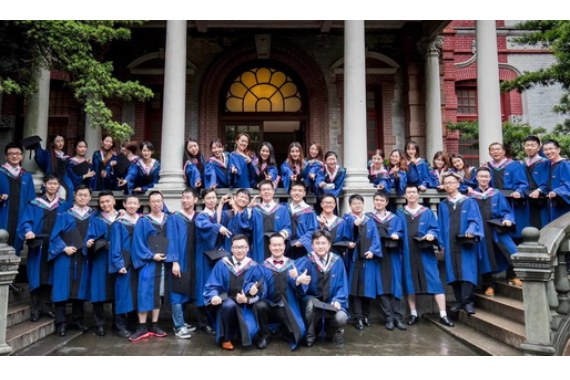
October 22, 2018
SAIF and King's College London Signed a Memorandum of Cooperation
On October 15, 2018, the Signing Ceremony of the Memorandum of Cooperation between Shanghai Advanced Institute of Finance (SAIF) at Shanghai Jiao Tong University (SJTU) and King's College London was held at the SAIF Xuhui Campus. The memorandum was signed by Professors Chun Chang (Executive Dean at SAIF) and Stephen Bach (Dean of King's Business School). Prof. Hong Yan (Deputy Dean at SAIF) and Prof. Igor Filatotchev (Associate Dean of King's Business School) attended the event. According to the memorandum, the two parties will combine their strong faculty and industry resources to cooperate in a number of key areas, including research, talent training, and international influence. In terms of training, the two parties will further work together in the development of international financial professionals through dual-degree programs, financial executive education programs, and exchange programs.
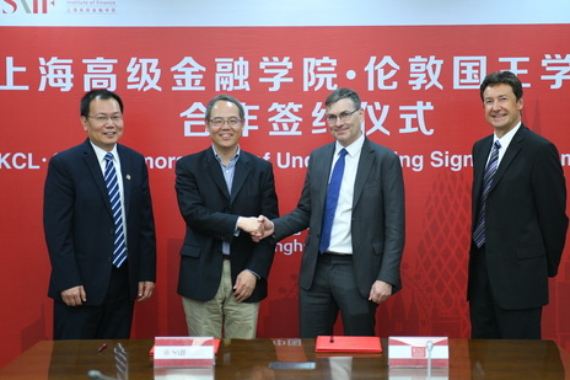
September 07, 2018
Prof. Haizhou Huang Won the Pagano and Zechner Best Paper at EFA
"The Capital Structure of Nations", co-authored by Prof. Haizhou Huang, Distinguished Professor at Shanghai Advanced Institute of Finance (SAIF); and Prof. Patrick Bolton, Professor of Economics and Finance at the University of Columbia, won the “Pagano/Zechner Best Paper Award in 2017/18” granted by the European Finance Association (EFA). The Pagano/Zechner Best Paper Award was created by the EFA to recognize the best papers published in its official journal,Review of Finance, over the past year. The award ceremony will be held at the EFA’s annual conference. The Chinese version of the paper was originally published inComparative Studies(Volume 92), with a total word count of 5,284 Chinese characters. The official account ofComparative Studiesalso published the award announcement recently. From the perspective of innovative economic theory, this paper establishes a new economic model to analyze capital structure at the national level and creates a common micro-theoretical foundation for three independent and interrelated economic disciplines, namely: Monetary Economics, Fiscal Theory, and International Finance (while the micro-theoretical foundation is based on corporate finance).
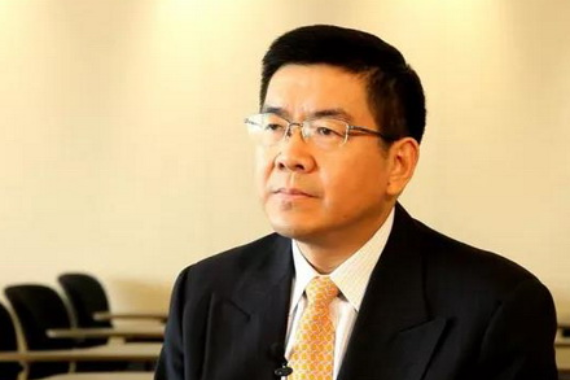
July 26, 2018
Professor Jiang Wang Won the China Economics Prize 2018
On July 12th, 2018, Professor Jiang Wang, Chair of Academic Council of Shanghai Advanced Institute of Finance, Shanghai Jiao Tong University and Mizuho Financial Group Professor of the Sloan School of Management, MIT, was awarded the China Economics Prize 2018 for his exceptional contributions in the field of finance. Established in 2016, the China Economics Prize is founded and led by the National Economics Foundation. The purpose of the award is to advance theoretical innovation, to boost economic science, and to encourage and promote Chinese economists to contribute to the prosperity of human economic science by awarding Chinese scholars who have made outstanding contributions to economics. The recipients of this year’s prize are Professor Jiang Wang and Professor Wei Xiong, the Academic Dean of the School of Management and Economics of the Chinese University of Hong Kong, Shenzhen, Professor of Finance and Professor of Economics at Princeton University. According to the Prize Committee, Professor Jiang Wang‘s important contribution is the development of a new asset pricing framework distinguished by incorporating market frictions into neoclassical theory, and the framework comprises three components. The first component is the development of asset pricing models that capture market participants’ important trading needs, providing a new theory to analyze the resulting equilibrium outcomes of such a model such as trading volume and price dynamics. The second part is studying market liquidity issues from the perspective of market frictions, thus providing a theoretical foundation for market liquidity. The third part is identifying potential inefficiencies caused by market frictions and exploring potential policy remedies ranging from regulatory actions to market interventions. Professor Wang’s research is mainly in the area of asset pricing, investment and risk management, market liquidity and stability, international finance, financial innovation and financial engineering, and Chinese capital market. He has published extensively in leading academic journals. He is the recipient of the Smith Breeden Prize, the FAME Research Prize, the Leo Melamed Prize, the Batterymarch Fellowship, among other scholarly awards. He has served on the editorial boards of the Journal of Financial Markets, Operations Research, Quantitative Finance, Review of the Financial Studies and other professional journals. Professor Wang has served as a member of the Financial Advisory Roundtable of the Federal Reserve Bank of New York, the International Advisory Council of China Securities Regulatory Commission, the Economic Advisory Board of NASDAQ Stock Market, Inc., the Academic Advisory Board of FTSE and the Academic Advisory Board of Moody’s. He has also served as a Director of the American Finance Association and the Western Finance Association, the Distinguished Visiting Professor of the London Business School and the Singapore Management University, and the Director of China Finance Research Center at Tsinghua University. He was President of the Western Finance Association (2017-2018).
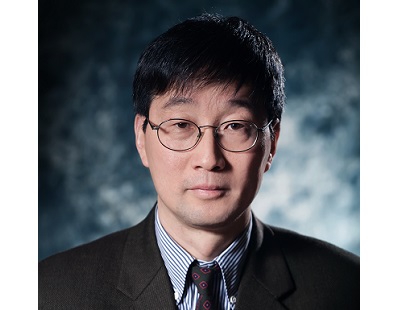
July 26, 2018
Professor Feng Li Received the 2018 AAA Distinguished Contributions to Accountin ...
On June 14, 2018, Professor Feng Li, Deputy Dean and Professor of Accounting at Shanghai Advanced Institute of Finance, Shanghai Jiao Tong University, received the 2018 Distinguished Contributions to Accounting Literature Award by the American Accounting Association (AAA). Founded in 1916, the American Accounting Association is the largest community of accountants in academia and one of the most influential academic accounting organizations in the world. The Distinguished Contributions to Accounting Literature Award is presented annually to work or related works published more than five years but not more than 15 years prior to the year of the award and recognizes accounting research based on uniqueness and magnitude of contribution to accounting education, practice and/or future accounting research, originality and innovative content, clarity and organization of exposition and soundness and appropriateness of methodology. The 2018 Distinguished Contributions to Accounting Literature Award is given to Professor Li for his works entitled “Annual report readability, current earnings, and earnings persistence” and “The Information Content of Forward-Looking Statements in Corporate Filings – A Naïve Bayesian Machine Learning Approach”. The award will be presented to Professor Li on August 8, 2018 at the AAA Annual Meeting in Washington, DC. Professor Li's research interest mainly lies in financial accounting, corporate disclosures and textual analysis. He has published widely in leading academic journals such as Journal of Accounting Research, Journal of Accounting and Economics, The Accounting Review, Management Science, and Journal of Financial Economics. Professor Li holds a Ph.D. in Business Administration with a concentration in Accounting, Finance and Economics area from University of Chicago. Before joining SAIF, Professor Li was Harry Jones Associate Professor of Accounting with tenure from 2011 to 2015 and the Ernst & Young Assistant Professor of Accounting from 2004 to 2011 in Stephen M. Ross School of Business, University of Michigan.
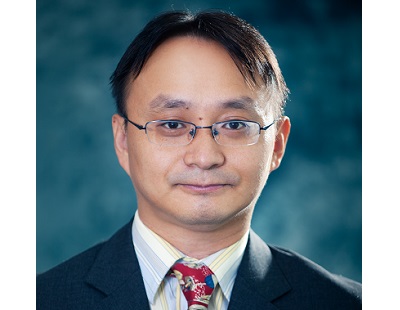
July 26, 2018
Peter Carr Unfolded the Mystery of Options Market Volatility at SAIF Distinguish ...
As the guest speaker of SAIF-CAFR Distinguished SpeakerSeries on July 23rd, 2018, Prof. Peter Carr (Head of the Department of Finance and Risk Engineering at the School of Engineering of New York University), focused on the options market and analyzed the relationship between volatility trading, skew trading, and smiletrading. Prof. David Li, Deputy Director of China Academy of Financial Research (CAFR) and Professor at Shanghai Advanced Institute of Finance (SAIF) at Shanghai Jiao Tong University (SJTU), hosted the interactive discussion session. Prof. Carr is highly recognized and respected by both students and practitioners of financial metrology. As one of Wall Street's most authoritative experts in quantitative investment, he worked for several of the world's leading institutions (including Morgan Stanley and Bloomberg Quant Research) and he was selected as one of the “Top 50 Fin-Tech Influencers”. Moreover, he has more than 85 publications in academic and industry journals and serves as an associate editor of several journals related to mathematics finance, boasting extensive experience in both industry and academia. During the event, Prof. Carr explained the definitions of volatility trading, skew trading, and smile trading to the audience, and analyzed the right timing of these trading opportunities. When the expectation of random mean is different from the observed implied volatility, it means an opportunity for volatility trading. When the non-zero slope is different than expected, there is a chance of skew trading. And when the convex number is different from the actual volatility in the future, it implies an opportunity for smile trading.
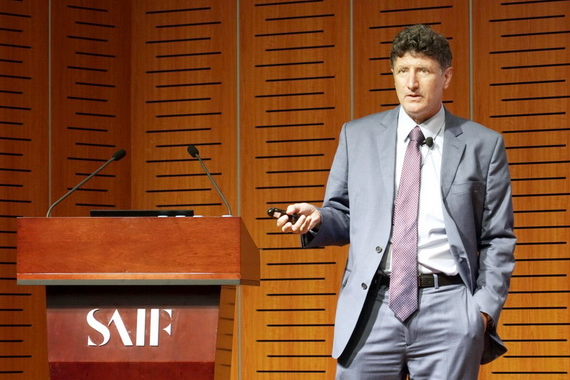
July 09, 2018
Xiaochuan Zhou at SAIF Distinguished Guest Series
On July 1st, Xiaochuan Zhou, President of China Society for Finance & Banking and former President of the People's Bank of China, shared his insights and analysis on Fin-Tech, Big-Tech, and other hot topics, (including eMoney and Libra), at the SAIF Distinguished Guest Series. Sixian Jiang, Secretary of the CPC Committee of Shanghai Jiao Tong University (SJTU) and Vice Chair of SAIF Board; Dexiu Ma, Deputy Director of the Committee of Education, Science, Culture, Health and Sports of the 12thNational Committee of the Chinese People's Political Consultative Conference (CPPCC), former Secretary of the CPC Committee Secretary of SJTU, and former Vice Chair of SAIF Board; Xiaoming Zhu, Vice Chairman of the 11thShanghai CPPCC and former President of China Europe International Business School (CEIBS); Penghui Jin, Deputy Director of the Shanghai Headquarters and President of the Shanghai Branch of the People's Bank of China; and Yang Zheng, then Director of Shanghai Municipal Financial Regulatory Bureau and Director of SAIF Board were invited to the event, along with nearly 300 SAIF faculty, students, and alumni. In his speech, Zhou elaborated "China's current financial business systems and their characteristics”, “some questions to face and answer before innovating the systems”, “general considerations of financial policies on Fin-Tech”, and “some preliminary comments on eMoney and Libra"; he then shared his latest insights. Jiang Wang, Chair of Faculty Council at SAIF, presided over the Q&A session, on which he discussed and exchanged ideas with Zhou on the topic of “Revolutionary Innovations that Will Be Brought about by the Evolution of Information Technology”; they then answered questions from the audience. The event was hosted by Chun Chang, Executive Dean of SAIF.
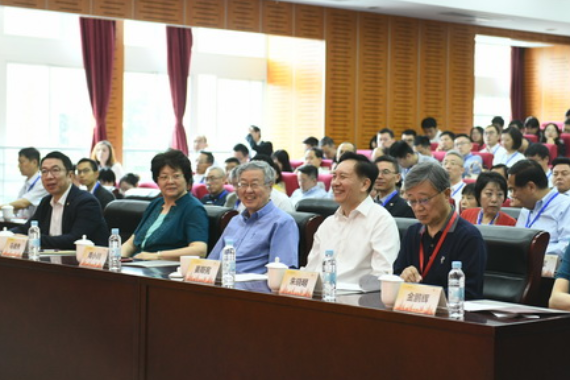

211 West Huaihai Road
Shanghai 200030, China
Tel: +86 21 6293 3500
9th Floor, Building T6, Hongqiao Hui
990 Shenchang Road
Shanghai 201106, China
3rd Floor, Building D, Chenfeng Building
800 Tongpu Road
Shanghai 200062, China
5th Floor, West Tower, World Financial Centre
1 Dong San Huan Middle Road
Chaoyang District, Beijing 100020, China
Tel: +86 10 5081 5880
1203 Tower 7, One Shenzhen Bay
Nanshan District, Shenzhen 518000, China
Tel: +86 755 8663 8815
© Shanghai Advanced Institute of Finance All Rights Reserved.


Top